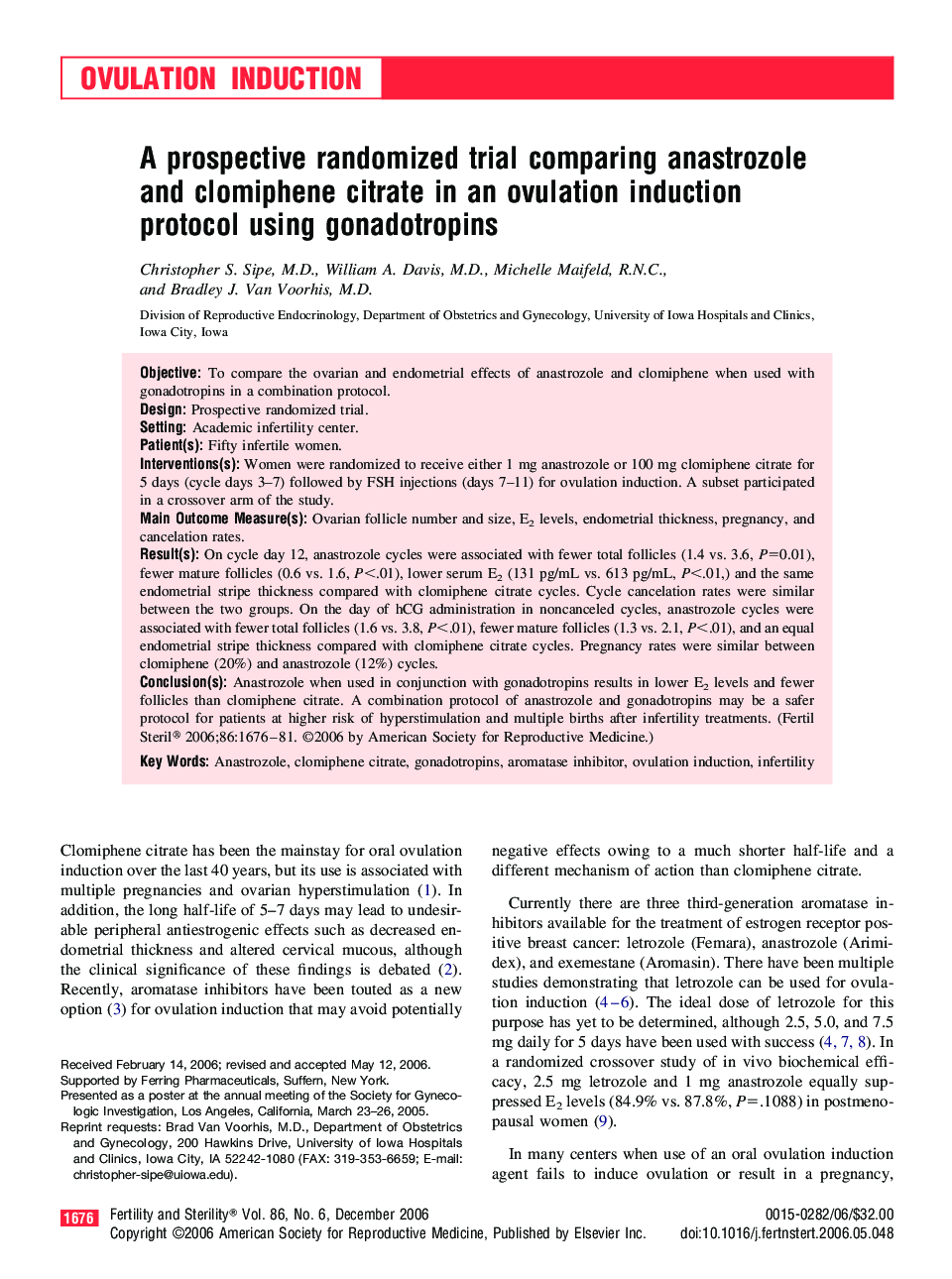| Article ID | Journal | Published Year | Pages | File Type |
|---|---|---|---|---|
| 3937633 | Fertility and Sterility | 2006 | 6 Pages |
ObjectiveTo compare the ovarian and endometrial effects of anastrozole and clomiphene when used with gonadotropins in a combination protocol.DesignProspective randomized trial.SettingAcademic infertility center.Patient(s)Fifty infertile women.Interventions(s)Women were randomized to receive either 1 mg anastrozole or 100 mg clomiphene citrate for 5 days (cycle days 3–7) followed by FSH injections (days 7–11) for ovulation induction. A subset participated in a crossover arm of the study.Main Outcome Measure(s)Ovarian follicle number and size, E2 levels, endometrial thickness, pregnancy, and cancelation rates.Result(s)On cycle day 12, anastrozole cycles were associated with fewer total follicles (1.4 vs. 3.6, P=0.01), fewer mature follicles (0.6 vs. 1.6, P<.01), lower serum E2 (131 pg/mL vs. 613 pg/mL, P<.01,) and the same endometrial stripe thickness compared with clomiphene citrate cycles. Cycle cancelation rates were similar between the two groups. On the day of hCG administration in noncanceled cycles, anastrozole cycles were associated with fewer total follicles (1.6 vs. 3.8, P<.01), fewer mature follicles (1.3 vs. 2.1, P<.01), and an equal endometrial stripe thickness compared with clomiphene citrate cycles. Pregnancy rates were similar between clomiphene (20%) and anastrozole (12%) cycles.Conclusion(s)Anastrozole when used in conjunction with gonadotropins results in lower E2 levels and fewer follicles than clomiphene citrate. A combination protocol of anastrozole and gonadotropins may be a safer protocol for patients at higher risk of hyperstimulation and multiple births after infertility treatments.
